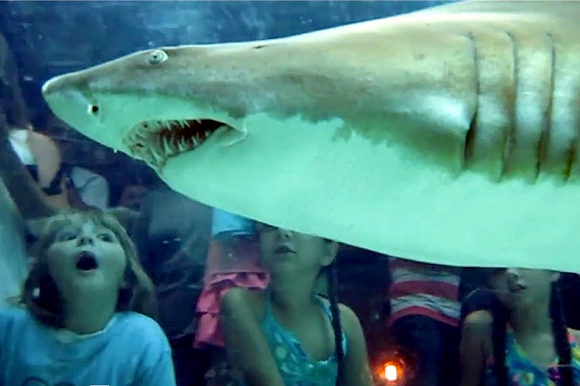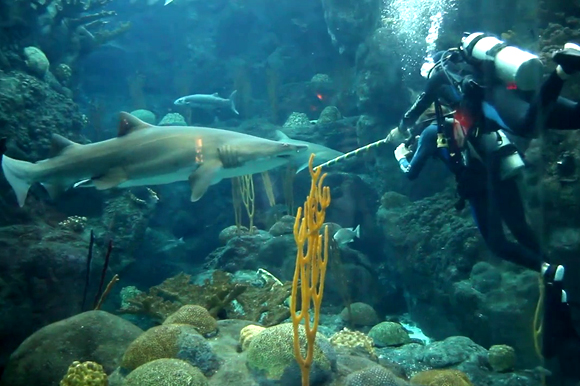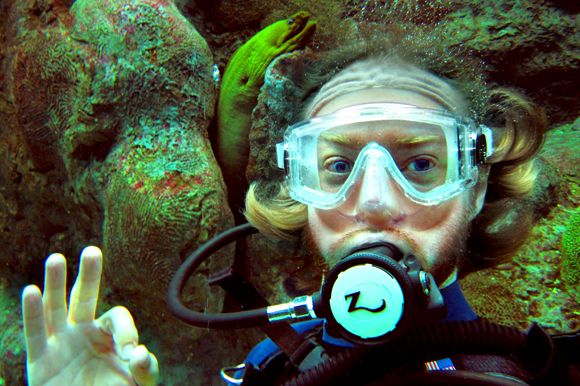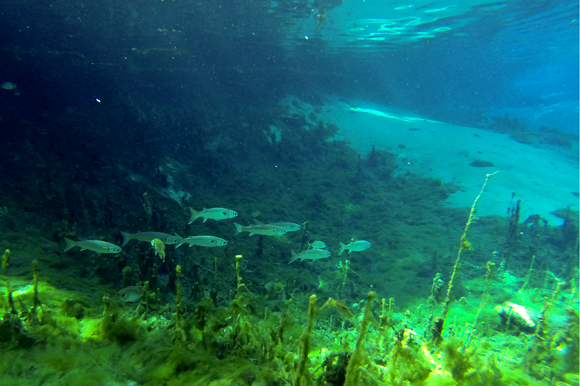Moving to Tampa Bay: The diving scene
If you want to get involved in scuba diving, one of the most fascinating and adventurous of the water sports in Florida, here’s what to expect and how to go about it.
There is no more water-oriented state in the nation than Florida – OK, maybe Hawaii – so if you’re here, you ought to be doing something in or on the water.
One of the most fascinating and adventurous watery activities is scuba diving.
Diving presents a wondrous world most people never get the opportunity to see. Experienced divers occasionally compare diving to being on another planet – particularly coral reef diving, the favored activity of many Florida divers because of easy access to the Keys and the Caribbean.
“It’s just gorgeous,” says Rita Fitzpatrick of Oldsmar, a travel agent who books diving trips through Maduro Dive Fanta-Seas. Diving on a reef wall, she says, “is like flying over the Grand Canyon. It’s weightlessness and beauty.”
She compares the astonishing diversity of life on a reef to one of the few above-water environments that have such diversity, the rainforest.
While the Keys are probably the diving capital of the state, Tampa will do just fine as a place to get started.
If you’ve never done it before or only dabbled, there are several ways to get into the local diving scene – dive clubs, environmental groups and dive shops, most of which book or sponsor trips as well as selling equipment.
First the question many non-divers ask: Isn’t it dangerous?
Experts say recreational diving isn’t dangerous, as long as it’s done properly and those involved don’t have health problems that should rule out diving.
Diving with a club or dive shop generally involves proper equipment, redundant cautionary procedures and divemaster supervision that eliminate danger.
Done correctly, experts say, recreational diving – as opposed to technical diving, which uses advanced equipment and techniques to go beyond recreational limits or deep into caves — is safe and not even particularly strenuous. Women dive as much as men, and retirees are flooding into the sport.
“It’s actually easier than swimming,” says Scott Lucci, a master diving instructor who runs the World of Water dive shop in downtown Tampa. “The closest thing to it is snorkeling.”
Anyone who feels comfortable snorkeling, he says, can probably be a diver.
The Divers Alert Network, the nation’s premier diving safety organization, in a 2010 study based on 10 years of statistics from dive training agencies, found a rate of 0.472 fatalities per 100,000 dives, or one death per 211,864 dives.
“If that number scares you, you certainly should give up driving your car,” commented DAN’s Alert Diver magazine.
Stories about divers dying in the many caves in Florida’s underground spring and aquifer system nearly always involve individuals who don’t have the proper training and don’t use correct techniques.
How do you get started and what will it cost?
Lucci, like many dive shop operators, teaches courses that produce basic certification required to rent filled tanks and other gear or reserve a spot on a dive boat.
He works with the Professional Association of Dive Instructors, or PADI, one of several national certification agencies; another is NAUI, the National Association of Underwater Instructors.
Lucci’s basic “open-water certification” course includes three to five sessions of 1.5 hours each in the pool, plus about five hours of classroom work, then four checkout dives over two days in a natural environment — “open water.”
Such a course plus rental of the dive equipment necessary to take it usually cost about $300 to $350, not including the checkout dive trip. Students should already own a mask, fins and snorkel, which can cost $150 to $200.
That basic certification is good for diving to 60 feet, but doesn’t produce an experienced or proficient diver. Lucci calls it “a license to learn.”
After that, he recommends structured diving overseen by a divemaster to gain experience safely.
Anyone interested in pursuing the sport, he says, should take an advanced open-water course, which permits diving to 100 feet, and eventually a rescue diver course, which teaches more advanced safety techniques and how to respond to emergencies. Each costs about $150 plus equipment rental.
Lucci rents a full set of diving gear for $40 a weekend, including two full tanks, a wetsuit, regulator (the breathing apparatus that attaches to the tank) and “buoyancy compensator device,” an inflatable vest that holds the tank and allows a diver to adjust buoyancy underwater.
Those who want to dive more than a few times a year, he says, should buy their own gear. That can cost thousands of dollars for sophisticated, top-of-the-line gear, but that’s not necessary for safe diving, says Stephanie Smith, who works with Lucci. A basic set of good-quality gear can be bought for as little as $1,200, not including tanks – many divers rely on rental tanks.
The first items a diver should own are a wetsuit, around $100 or more, an underwater watch and/or a wearable dive computer that tracks depth and time to prevent decompression sickness, known as “the bends” — about $200 for a basic model. A regulator and BCD are next.
Most divers will eventually want to add such items as an underwater compass, light and signaling equipment.
How do you find the right instructor?
“Word of mouth is the best way,” Lucci says. “Ask people you know who are into diving.”
Then go to a dive shop and talk to the people there to find someone you feel comfortable with and feel confidence in, he says.
Joining a dive club is one way to connect with other divers.
Fitzpatrick is a member of two – the Clearwater-based Sea Bunnies, and the Tampa-based Suncoast Scuba Club. Meetup.com lists more than a dozen in the Tampa area.
Suncoast includes many veteran divers including former instructors, and arranges monthly weekend trips to the east coast for reef diving from spring through fall, plus at least one week-long trip a year, usually to a top dive site in the Caribbean.
This year’s big trip was a week-long dive cruise off the coast of Belize.
In addition, says club President Don Herbert, members often arrange their own group trips or go on trips arranged by area divemasters.
If you’re interested in the underwater world, you will quickly become an avid conservationist, and may want to volunteer with organizations such as the Florida Aquarium, the Coral Reef Restoration Foundation or REEF – the Reef Environmental Education Foundation.
The Aquarium uses volunteer divers to clean the inside of tanks and do underwater shows from inside its coral reef and shark exhibits, says volunteer services manager Chelsea Gomez. Volunteers are recruited as needed, and those interested should check the Aquarium’s website.
The Coral Restoration Foundation farms coral at sites in the Keys and then transplants it to damaged reefs, says spokesman Alex McFarland.
Volunteers pay a $50 fee plus their own travel and equipment costs, and can spend as little as one day on an orientation presentation and two dives. Lucci organizes longer Foundation trips.
REEF seeks divers’ help with reef fish surveys, says Martha Klitzkie, director of operators.
Divers can do the survey work independently, “just about anywhere there’s saltwater,” or go on dive trips sponsored the organization to top Caribbean locations — “A dive vacation that counts,” says the group’s website.
Klitzkie says the group’s volunteers have created the world’s largest fish sighting database.
















